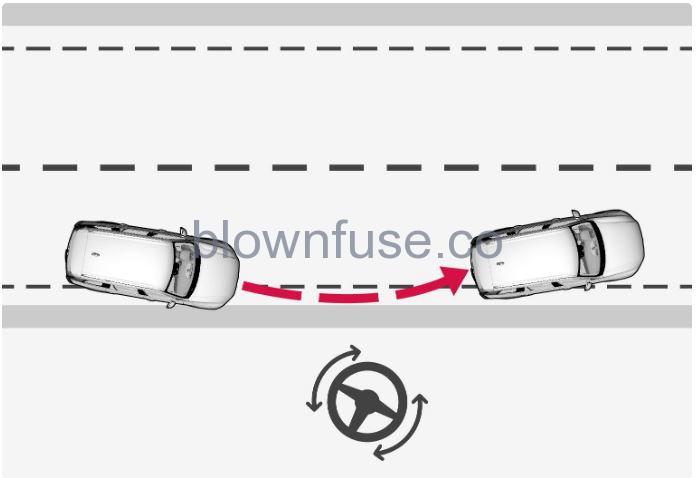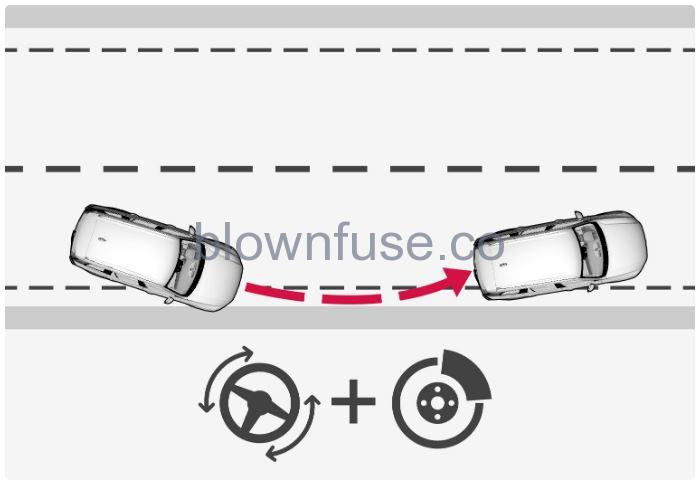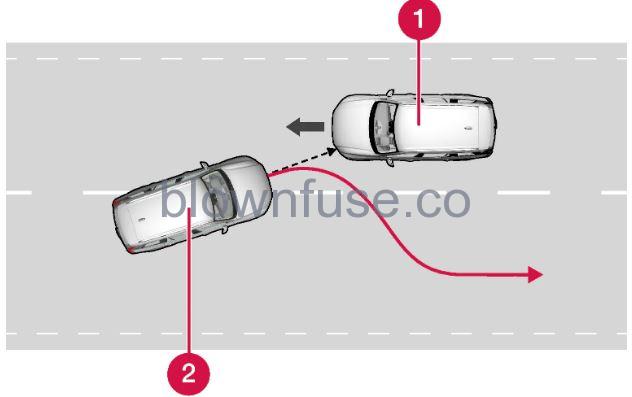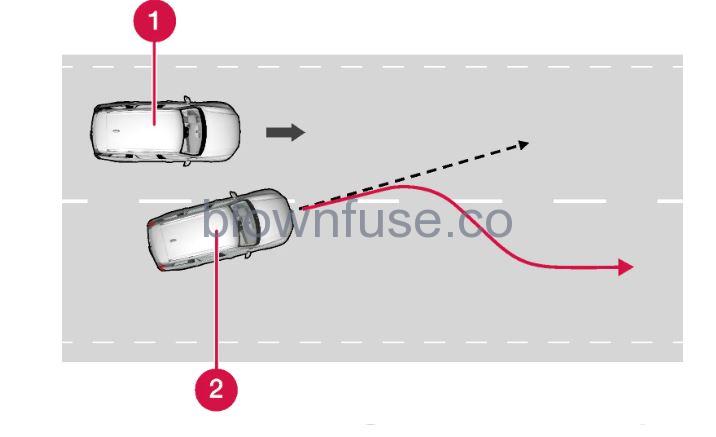2022 Volvo S60 Steering assistance at risk of collision

Steering assistance at risk of collision
The function consists of these subfunctions:
- Steering assistance upon the risk of run-off
- Steering assistance upon the risk of a head-on collision
- Steering assistance upon the risk of rear-end collision
After the automatic engagement, the driver display indicates that this has occurred via a text message:
Collision avoidance Automatic intervention
Warning
- The function is supplementary driver support intended to facilitate driving and make it safer – it cannot handle all situations in all traffic, weather, and road conditions.
- The driver is advised to read all sections in the Owner’s Manual that relate to this function to learn about factors such as its limitations and what the driver should be aware of before using the system.
- Driver support functions are not a substitute for the driver’s attention and judgment. The driver is always responsible for ensuring the car is driven in a safe manner, at the appropriate speed, at an appropriate distance from other vehicles, and in accordance with current traffic rules and regulations.
Note
It is always the driver who decides how much the car should steer – the car can never take command.
Activating or deactivating steering assistance in the event of a collision risk

Activate or deactivate the function using this button in the center display’s function view.
- Illuminated button indication – the function is activated.
- Extinguished button indication – the function is deactivated.
- This function is activated automatically each time the engine is started.
Note
When the Collision avoidance function is deactivated, all subfunctions are switched off:
- Steering assistance at risk of road departure
- Steering assistance at risk of oncoming collision
- Steering assistance at risk of rear-end collision
- Even though it is possible to deactivate the function, it is advisable for the driver to always have it activated since it improves driving safety in most cases.
Symbols and messages for steering assistance upon the risk of collision
| Symbol | Message | Specification |
|---|---|---|
 |
Collision avoidance
Automatic intervention |
When the function is activated, a message is shown to the driver indicating that the system has been activated. |
 |
Windscreen sensor Sensor blocked, see Owner’s manual |
The ability of the camera to scan the roadway in front of the car is reduced. |
A text message can be cleared by briefly pressing the ![]() button, located in the center of the steering wheel’s right-hand keypad.
button, located in the center of the steering wheel’s right-hand keypad.
If a message remains: Contact a workshop – an authorized Volvo workshop is recommended.
Limitations for steering assistance at risk of collision
- for small vehicles, such as motorcycles
- if the majority of the car has steered into the adjacent lane
- on roads/in lanes with unclear or non-existent lane markings
- outside the speed range of 60-140 km/h (37-87 mph)
- as the steering servo for speed-dependent steering wheel resistance is working at reduced power – e.g. when cooling due to overheating.
Other demanding situations can include:
- road works
- winter road conditions
- narrow roads
- poor road surface
- a very “sporty” driving style
- poor weather with reduced visibility.
In these demanding situations, the function may have difficulty helping the driver correctly. In such cases, it is recommended to switch off this function.
Warning
Warnings and steering assistance due to an impending collision with an oncoming vehicle always come very late.
Note
This function uses the car’s camera and radar units, which have certain general limitations.
Steering assistance upon the risk of run-off
The function has two activation levels on intervention:
- Steering assistance only
- Steering assistance with brake intervention
Steering assistance only
 Intervention with steering assistance
Intervention with steering assistanceSteering assistance with brake intervention
 Intervention with steering assistance and braking
Intervention with steering assistance and braking- Brake intervention helps in situations where steering assistance alone is not sufficient. The brake force is adapted automatically depending on the situation at the time of road run-off.
- The function is active within the speed range of 65-140 km/h (40-87 mph) on roads with clearly visible lane markings/lines.
- A camera scans the edges of the road and the painted side markings. If the car is about to leave the side of the road, the car is steered back onto the road and if the steering intervention is not enough to avoid a run-off, the brakes are also activated.
- However, the function does not intervene with either steering assistance or brake intervention if the direction indicators are used. And if the function detects that the driver is actively driving the car, activation of the function will be delayed.
- When the function intervenes, a message is shown in the driver display.
Steering assistance upon the risk of a head-on collision
 The function can assist by guiding the car back to its own lane.
The function can assist by guiding the car back to its own lane.- Oncoming vehicles
- Your car
- At the same time as steering intervention is activated, collision warning for driver support is also activated. However, the brake pulse included in the collision warning will not be activated.
- The function is active within the speed range of 60-140 km/h (37-87 mph) on roads with clearly visible lane markings/lines.
- If the car is about to leave its own lane while an oncoming vehicle is approaching at the same time, the function can help the driver to steer the car back into its own lane.
- However, the function does not intervene with steering assistance if the direction indicator is used. And if the function detects that the driver is actively driving the car, activation of the function will be delayed.
- When the function intervenes, a symbol and a message are shown in the driver display, and an acoustic signal can be heard as well.
Steering assistance upon the risk of rear-end collision
 The function can assist by steering the car back to its own lane.
The function can assist by steering the car back to its own lane.- Another vehicle in the blind spot
- Your car
- If the car is about to leave its own lane while another vehicle is in the blind spot, or another vehicle is approaching rapidly in an adjacent lane at the same time, the function can help the driver steer the car
back into its own lane. - The function can even assist if the driver intentionally changes lanes using direction indicators without noticing that another vehicle is approaching.
- The function is active within the speed range of 60-140 km/h (37-87 mph) on roads with clearly visible lane markings/lines.
- The lamps in the door mirrors flash during steering intervention, regardless of whether the BLIS function is activated. An acoustic signal can also be heard.
- When the function intervenes, a message is shown in the driver display.

